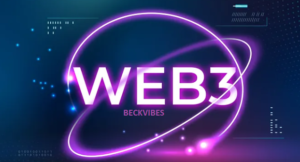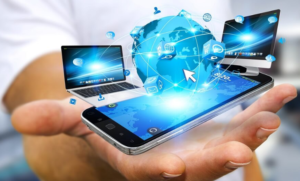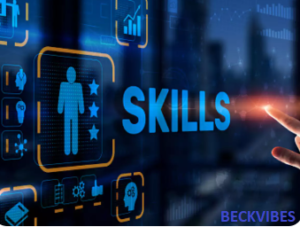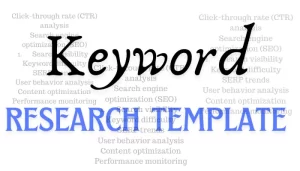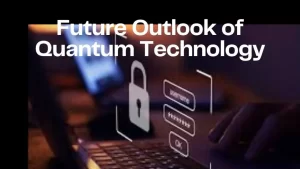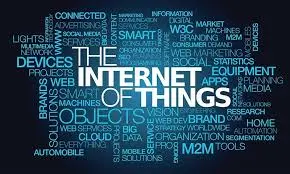
Harnessing the Gains in Artificial-Intelligence, Big data and IoT
The phrase artificial intelligence (AI) evokes visions of sentient robots and advanced society. However, AI’s journey has been an interesting mix of ambition and innovation, from its modest origins in the minds of visionary thinkers to its current ubiquity. Harnessing the gains in artificial-intelligence, big data, and IoT is crucial.
The Intelligence Seeds
AI has its roots in the speculations of ancient thinkers such as Aristotle about the potential of thinking machines. In the 20th century, innovators like Alan Turing sowed the seeds of contemporary artificial intelligence (AI) with his Turing Test of 1950, which provides a standard for determining a machine’s level of intelligence based on its capacity to have intelligible conversations with humans.
Logic and Symbolism Are Supreme
Symbolic AI, in which robots process information using rules and symbols, emerged in the 1950s and 1960s. Expert systems, which were based on logical thinking, were quite good at some tasks, such as diagnosing illnesses and playing chess. However, its rigidity and inability to handle complex, real-world challenges limited its relevance.
A Doubtful Winter: The AI Bust
Notwithstanding early triumphs, there was an economic crisis in the 1970s and 1980s known as the “AI Winter.” Funding cuts and disillusionment resulted from overly optimistic expectations combined with insufficient technical capabilities. Still, this break encouraged critical thinking and opened the door for fresh ideas.
The Machine Revolution
A new age, spurred by connectionism and the architecture of the human brain, evolved in the late 1980s. With their ability to learn from and adapt to data, neural networks brought about a paradigm shift. In the twenty-first century, deep learning—a type of connectionism—saw an exponential rise in popularity thanks to large data sets and potent processing capacity.
AI Everywhere: Redefining the Current
AI isn’t just a sci-fi cliché anymore. From facial recognition on smartphones to tailored recommendations on streaming services, it is ingrained in every aspect of everyday life. AI helps in medication research and medical diagnosis in the healthcare industry. It powers market forecasting and fraud detection in finance. AI is creating music and learning languages.
Difficulties and Ethical Issues
The rapid advancement of AI is not without challenges. Concerns regarding bias in algorithms, automation replacing human labor, and possible abuse necessitate thoughtful consideration of the ethical implications of automated weapons and responsible development.
Is artificial-intelligence enough?
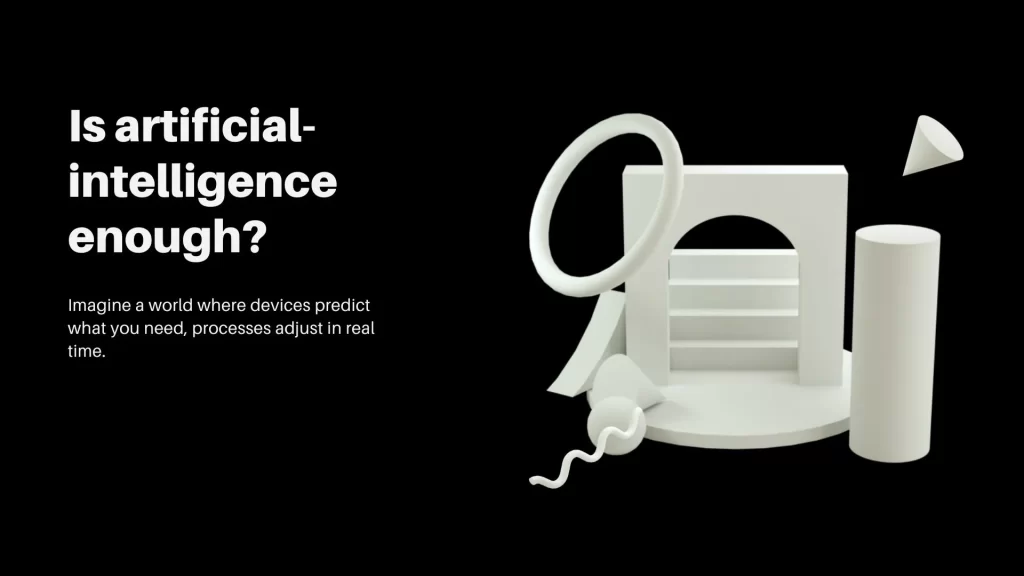
Where will artificial intelligence go? The future is full of exciting opportunities. Technological developments in quantum computing have the potential to expand AI’s capabilities. The goal of creating a machine with human-like reasoning, learning, and adaptability—also known as artificial general intelligence, or AGI—remains a distant goal.
AI’s history is far from done. It is a tale of human resourcefulness, tenacity, and an unwavering quest to comprehend the essence of intelligence itself. Let’s explore AI’s enormous potential while navigating its ethical and societal ramifications, keeping in mind that technology is a supplement to human ingenuity and curiosity, not a replacement for them. By doing this, we might be able to find answers to some of the most important problems facing humanity and help to create a future in which AI and people work together to create a better world.
Unleashing the Power of Big Data
With each click, swipe, purchase, and interaction, a digital footprint is created that contributes to the massive amount of information known as big data. Big data, once viewed as a scary monster, is currently experiencing a metamorphosis, evolving from raw data into revolutionary perspectives that can empower companies, disrupt entire industries, and influence the course of history.
Detangling the Web of Data
Imagine a whirling tornado of data, tumbling with potential: bank transactions, social media trends, sensor readings, and consumer journeys. Big data extends beyond typical datasets and includes unstructured social media postings and photos as well as organized spreadsheets. Although the sheer volume and variety were a hurdle, the revolutionary potential of data has been harnessed by advances in data processing, storage, and analytics.
Like unprocessed metal, large amounts of data need to be refined to show their actual worth. We can turn this data into useful insights by using machine learning algorithms and strong analytics tools. These insights offer a comprehensive picture of customers, operations, and market trends. They are taken from prediction algorithms, hidden correlations, and historical trends.
Boosting Enterprises and Upending Sectors
Imagine having real-time supply chain optimization, precisely crafting individualized marketing strategies, or anticipating client loss before it occurs. Big data is changing a variety of industries, including manufacturing, retail, healthcare, and finance.
Healthcare: By analyzing sensor data and medical records, individualized treatment plans may be created, early disease detection can be achieved, and drug discovery can be revolutionized. Personalized financial solutions meet individual needs, market forecasts guide investment decisions, and fraud detection systems protect transactions.
Targeted promotions, efficient inventory control, and an understanding of consumer behavior all help to create great customer experiences and increase sales. Data-driven production lines increase efficiency, real-time insights optimize resource allocation, and predictive maintenance prevents equipment failures.
There are still challenges, even with big data’s clear appeal. To guarantee responsible and creative big data usage, these obstacles may be addressed with cooperation, expertise, and ongoing education.
A Data-Shaped Future
Big data will continue to have an impact on every aspect of our lives as time goes on. The insights gained from this limitless information ocean have the potential to drive personalized education, better cities, and even scientific discoveries. Big data is a revolutionary force that is reshaping our world, not just another technological marvel.
The Internet of Things (IoT) Revolution
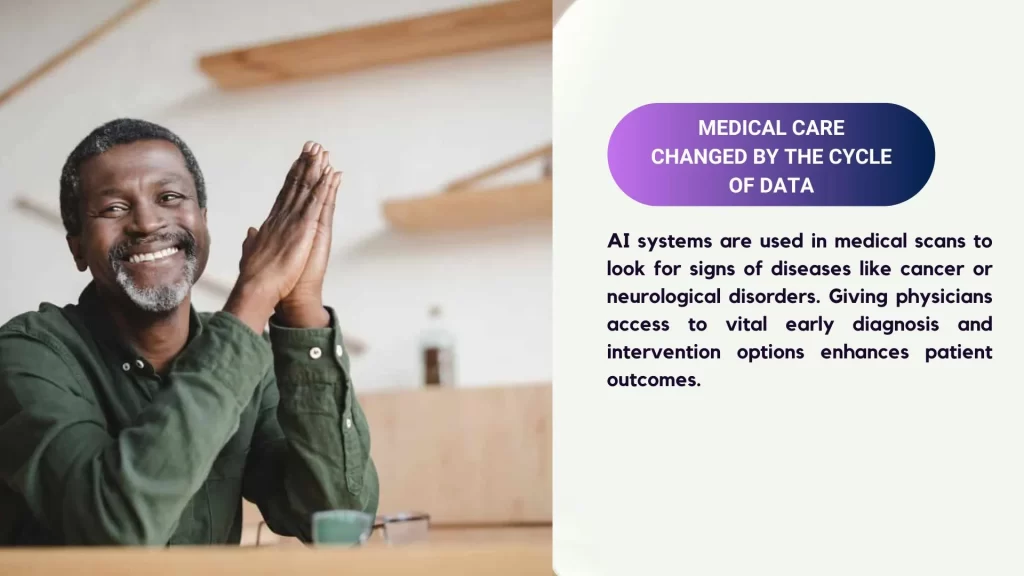
Once restricted to science fiction, the rumblings of a connected world are now a real thing. The Internet of Things (IoT) revolution is weaving a web of intelligence around us, transforming everyday objects into data-driven agents with the ability to communicate, adapt, and learn. The internet-of-things (IoT) revolution is transforming every part of our lives, from self-driving automobiles navigating cityscapes to smart dwellings that anticipate our needs. It is ushering in a new era of automation, convenience, and unparalleled insights.
Linking the Unconnected
Additionally, the internet of things revolution connects previously isolated objects to the Internet so they may exchange data and communicate. Sensors integrated into anything from industrial equipment and traffic lights to refrigerators and heaters continuously generate real-time data. This data powers the Internet of Things (IoT), as it is fed into intelligent systems that assess, learn, and make decisions—oftentimes without human intervention.
Creating Homes
The smart home is arguably the IoT revolution’s most noticeable face. By modifying the lighting, temperature, and entertainment systems according to our schedules and preferences, connected appliances react to our daily routines. Security systems pick up on our habits and provide access to those we trust while discouraging unauthorized access. These minor comforts add up to major improvements in security, energy efficiency, and comfort, illustrating a future in which dwellings anticipate our wants without any trouble.
Changing Industries
The internet of things is transforming a variety of industries, including manufacturing and healthcare, outside the comforts of our own homes. Intelligent sensors track vital indicators in real-time in hospitals, allowing for preemptive intervention and individualized treatment. Connected factories increase productivity and reduce downtime by streamlining supply chains, improving manufacturing processes, and anticipating equipment breakdowns. To monitor soil health, adjust irrigation, and increase crop yields, the agricultural sector uses smart sensors. This opens the door for data-driven and sustainable farming methods.
Possibilities and Difficulties
The internet of Things revolution presents a unique set of problems, as does any revolutionary technology. Data privacy, security flaws, and the possibility of employment displacement are issues that need serious thought and effective responses.
An Intelligent Future
The Internet of Things revolution envisions an intelligent future in which intelligence is effortlessly integrated into every aspect of our daily lives. Let’s imagine urban environments where traffic patterns are dynamically adjusted to reduce traffic jams and emissions. Assume platoons of autonomous vehicles, enhancing efficiency and safety on roadways. Imagine wearable technology keeping an eye on our health in real-time, preventing disease, and encouraging preventive care. This isn’t just a pipe dream; it’s the real promise of the Internet of Things revolution, one that might improve our lives in the long run by increasing comfort, efficiency, and quality.
Convergence: Artificial-Intelligence, Big Data, and IoT Integration
Imagine a world in which your automobile adapts its driving based on current traffic circumstances, your refrigerator automatically reorders groceries based on your eating patterns, and AI analyzes innumerable data points to diagnose you for medical concerns. This is not science fiction; rather, it is the potential that has been made possible by the combination of three game-changing technologies: huge amounts of data, artificial intelligence (AI), and the internet of Things (IoT).
The Synergistic Power
On their own, AI, Big Data, and IoT are already changing our lives and upending industries. Beyond human capacity, AI programs can identify patterns and make predictions. These algorithms are powered by big data, which provides enormous amounts of data for them to examine and absorb. Additionally, the IoT creates a network of linked devices that broadcast data about our environment continuously.
Big Data as the Knowledge, IoT as the Senses, and AI as the Brain
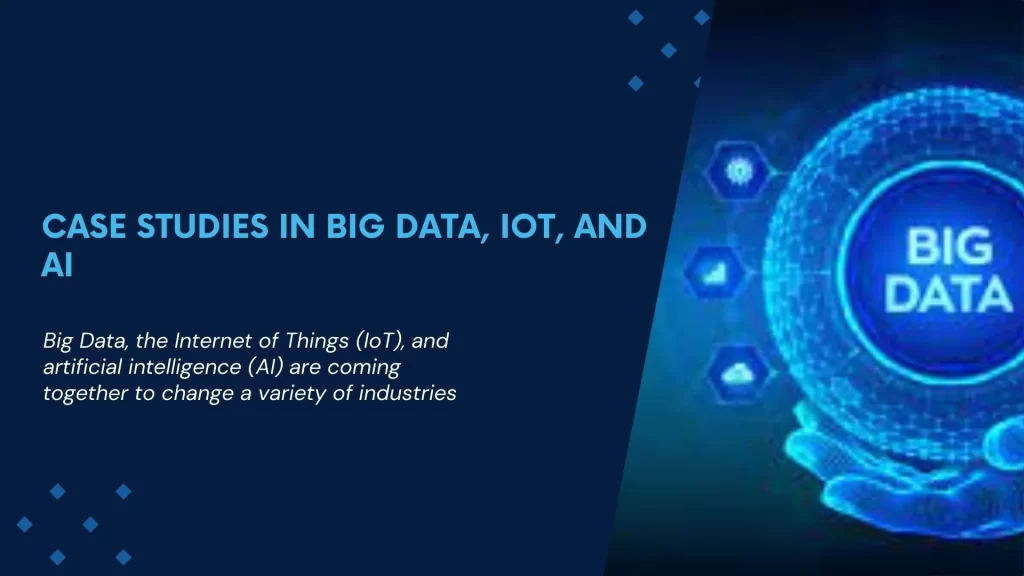
Enhanced Automation: Real-time process optimization is possible thanks to AI algorithms that can evaluate data from networked devices. Imagine smart grids that efficiently distribute energy depending on varying demand or factories where equipment self-adjusts based on production data.
Personalized Experiences
AI can customize your environment by utilizing big data from your online activities and linked gadgets. Imagine arriving home to find your favorite music playing, the temperature automatically adjusted, and your needs anticipated.
There are difficulties associated with this convergence. The bulk of personal data that is gathered raises privacy issues. The more devices that are connected, the greater the security danger. And when AI decisions affect human lives, ethical questions come up. Realistically tackling these issues is essential to realizing the full promise of this technological revolution.
Getting Ready for the Future
As this convergence occurs, people and companies need to adjust. People must make responsible decisions to engage in this connected world by being aware of the effects of the data they generate. Companies must invest in big data and AI knowledge, create secure IoT solutions, and give ethical issues a priority when developing algorithms and apps.
The coming together of AI, Big Data, and IoT is a paradigm shift rather than just a technical development. It has the power to revolutionize whole sectors, open up fresh possibilities, and change how we interact with technology.
Where do artificial intelligence, big data, and IoT intersect?
Imagine a world in which devices predict what you need, processes adjust in real time, and machines communicate with one another. This is not science fiction; rather, it’s the interconnected chords of artificial intelligence (AI), big data, and the internet of Things (IoT) performing a symphony of technology. Despite each instrument having a unique function, they all work together to create a potent crescendo that is changing lives, industries, and the limits of what is thought to be possible.
AI: The Conductor, Coordinating Understandings
Consider artificial intelligence as the conductor, using artificial brains and analytics as its baton. It sorts through the enormous amounts of data that the internet of Things has acquired, looking for trends, forecasting the future, and eventually guiding wise choices. Artificial intelligence (AI) gives raw data life, from facial recognition in security systems to tailored suggestions on your favorite app.
Big Data: A Tapestry of Information
Big Data sets the stage for this technological orchestra, providing an ever-expanding score for information to dance on. Each sensor within the Internet of Things network, each website click, and each transaction within a corporate system adds to an ever-expanding symphony. Big data provides the AI conductor with the raw material for its insights and drives the intelligent automation that defines the connected world.
IoT: The Tools, Silhouetting Data Tales
The internet of Things, a massive network of sensors, machines, and other embedded gadgets in our environment, serves as the orchestra. IoT devices whisper data stories that AI painstakingly deciphers, from connected thermostats that optimize energy consumption to smart wearables that track our health.
Systems can now respond to ever-changing settings and produce unthinkable experiences thanks to the continuous influx of data.
The Unveiled Harmony: A Peer Into the Future
Many different industries are already changing as a result of this harmonious fusion of AI, big data, and IoT.
Healthcare:
By analyzing patient data and predicting health hazards, AI-powered medical technologies enable individualized treatment regimens. Networked factories reduce downtime, maximize output, and anticipate equipment malfunctions.
The shopping experience is being transformed by customized advertising campaigns and personalized recommendations based on user data. In smart cities, energy grids optimize resource allocation depending on demand, while traffic management systems adjust to real-time congestion.
There are many difficulties and factors to consider:
The large volume of big data creates privacy and security issues that necessitate the implementation of strong data governance systems. To guarantee just and moral AI applications, algorithmic bias needs to be carefully audited and mitigated. As intelligent systems take over jobs, human roles must change to accommodate new skill sets and seamless cooperation.
Successful Implementations and Case Studies in Big Data, IoT, and AI
Big Data, the Internet of Things (IoT), and artificial intelligence (AI) are coming together to change a variety of industries, including manufacturing, retail, and healthcare. Through the utilization of artificial-intelligence (AI) and the massive data generated by networked devices, companies are generating revolutionary ideas, streamlining processes, and gaining deep insights. Let’s look at a few case studies and successful implementations from different industries:
Industrial Superiority with AI and Big Data
Predictive Maintenance:
Boeing analyzes sensor data from their aircraft using AI and big data to identify component failures before they happen. This proactive strategy guarantees passenger safety, reduces maintenance costs by millions, and eliminates downtime.
Siemens Quality Control:
Siemens uses AI-driven vision systems to continuously monitor production lines and identify even the smallest flaws in manufactured goods. This saves waste, improves manufacturing quality, and drastically lowers the need for manual checks.
Medical Care Changed by the Cycle of Data
AI systems are used in medical scans to look for signs of diseases like cancer or neurological disorders. Giving physicians access to vital early diagnosis and intervention options enhances patient outcomes.
IoT and AI-Powered Smart Cities
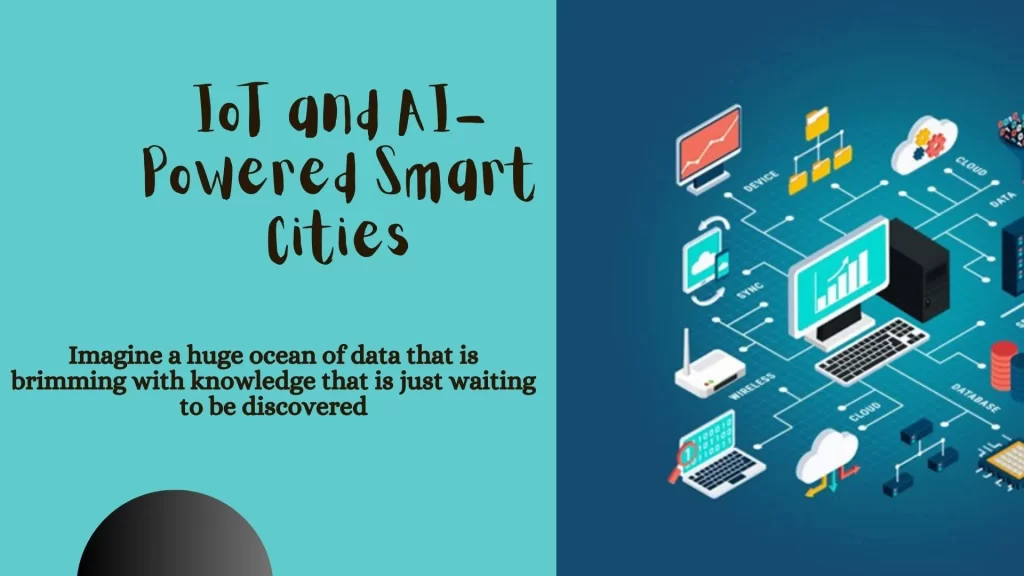
Traffic Optimization:
To optimize traffic flow and lower congestion, pollutants, and commuter travel times, cities like Los Angeles use IoT sensors and AI algorithms. Businesses like Waste Connect optimize rubbish collection routes by using AI and linked bins to cut down on environmental effects. By making appropriate product recommendations to customers based on their browsing and purchase history, Amazon’s AI-powered recommendation engine increases customer satisfaction and sales.
To maximize income and optimize inventory, airlines like Qantas alter ticket rates in real-time in response to variables such as demand, rival pricing, and meteorological trends.
These effective implementations have a few things in common:
Successful organizations are those that know exactly what they want to accomplish and how big data, IoT, and AI can help. Gathering, storing, and analyzing the massive volumes of data produced by IoT devices requires a dependable and scalable data infrastructure.
Effective data analysis and model generation require investing in qualified experts who can create and apply AI solutions. Interdepartmental cooperation among data scientists, business divisions, and IT promotes an innovative culture and guarantees that AI solutions are in line with business requirements. Three areas stand out in this dynamic ecosystem: artificial intelligence (AI), the Internet of Things (IoT), and big data.
Big Data: The Engine’s Fuel
Imagine a huge ocean of data that is brimming with knowledge that is just waiting to be discovered. As the trawler, big data analytics sorts through both organized and unstructured data to find hidden correlations, trends, and patterns. Companies in a variety of sectors use this powerful fuel to:
Streamline processes, cut costs, and boost efficiency by analyzing customer behavior, production lines, and logistics. Customize marketing campaigns, product suggestions, and customer support exchanges to create a more meaningful and profound experience.
IoT: Sensors Create an Understanding Web
The digital and real worlds are getting more and more intertwined. Embedded sensors and networked devices make up the enormous Internet of Things (IoT), which whispers crucial information about our infrastructure.
This real-time intelligence supports the following applications:
Increase efficiency and public well-being by managing energy use, streamlining transportation, and keeping an eye on vital infrastructure via smart cities. Predictive maintenance reduces downtime and ensures operational continuity by analyzing sensor data from industrial equipment to identify potential problems.

AI: The Oversight Leading the Way
Big data and IoT, While artificial intelligence surpasses biological constraints, the human brain serves as an inspiration. ARTIFICIAL INTELLIGENCE (AI) algorithms drive innovations such as learning from data, adapting via experience, and drawing wise conclusions. Free up human resources for more complex tasks by automating processes like fraud detection, language translation, and image recognition. Natural language processing can help computers understand human language, paving the way for chatbots and other natural human-computer interactions.
FAQ: Harnessing the Gains in Artificial-Intelligence, Big data and IoT
What are the possible advantages of merging IoT, big data, and Artificial-intelligence?
Enhanced Decision-Making:
Firstly, businesses can make better decisions by combining AI with massive data from IoT devices. Using AI and IoT to automate processes can boost productivity, cut expenses, and increase efficiency.
The combination makes predictive analytics viable, allowing businesses to anticipate trends, identify patterns, and take proactive steps to address issues. AI-driven analytics of vast amounts of data from IoT devices can provide highly tailored user experiences and customized offerings.
What applications of these technologies can you give from the actual world?
AI evaluates this massive amount of data to optimize municipal operations. IoT sensors gather information on energy usage, traffic patterns, and public services. AI analyzes the data gathered from IoT devices to provide individualized treatment programs and early health issue detection.
Artificial intelligence forecasts maintenance needs and minimizes downtimes by utilizing data from Internet of Things (IoT)-connected devices. AI uses data from IoT devices to evaluate consumer behavior, giving retailers insights for better customer service and targeted marketing.
What possible hazards and difficulties could these technologies present?
Businesses may encounter technological difficulties in establishing and sustaining such complicated systems when combining AI, big data, and IoT. Algorithm bias and the risk of unanticipated effects are two ethical issues that arise when using AI to make decisions.
How can companies get ready to benefit from these technologies?
To handle privacy issues and adhere to rules, establish strong data governance procedures. To stay up-to-date on the newest developments, form partnerships with academic institutions, industry professionals, and technology providers.
Where can I find out more information about these technologies?
Similarly, AI, big data, and internet of Things courses are available on platforms such as Coursera, edX, and Udacity.
Examine the professional credentials available for particular technologies from companies such as Microsoft, Google Cloud, and AWS. Attend industry conferences and webinars to learn from professionals in the fields of artificial intelligence, big data, and the IoT.
Additionally, read books authored by experts in the field and browse research articles published in relevant journals. To stay up-to-date on the newest advancements in AI, big data, and IoT, regularly visit technology blogs.
Drop a comment on Harnessing the Gains in Artificial-Intelligence, Big data and IoT


